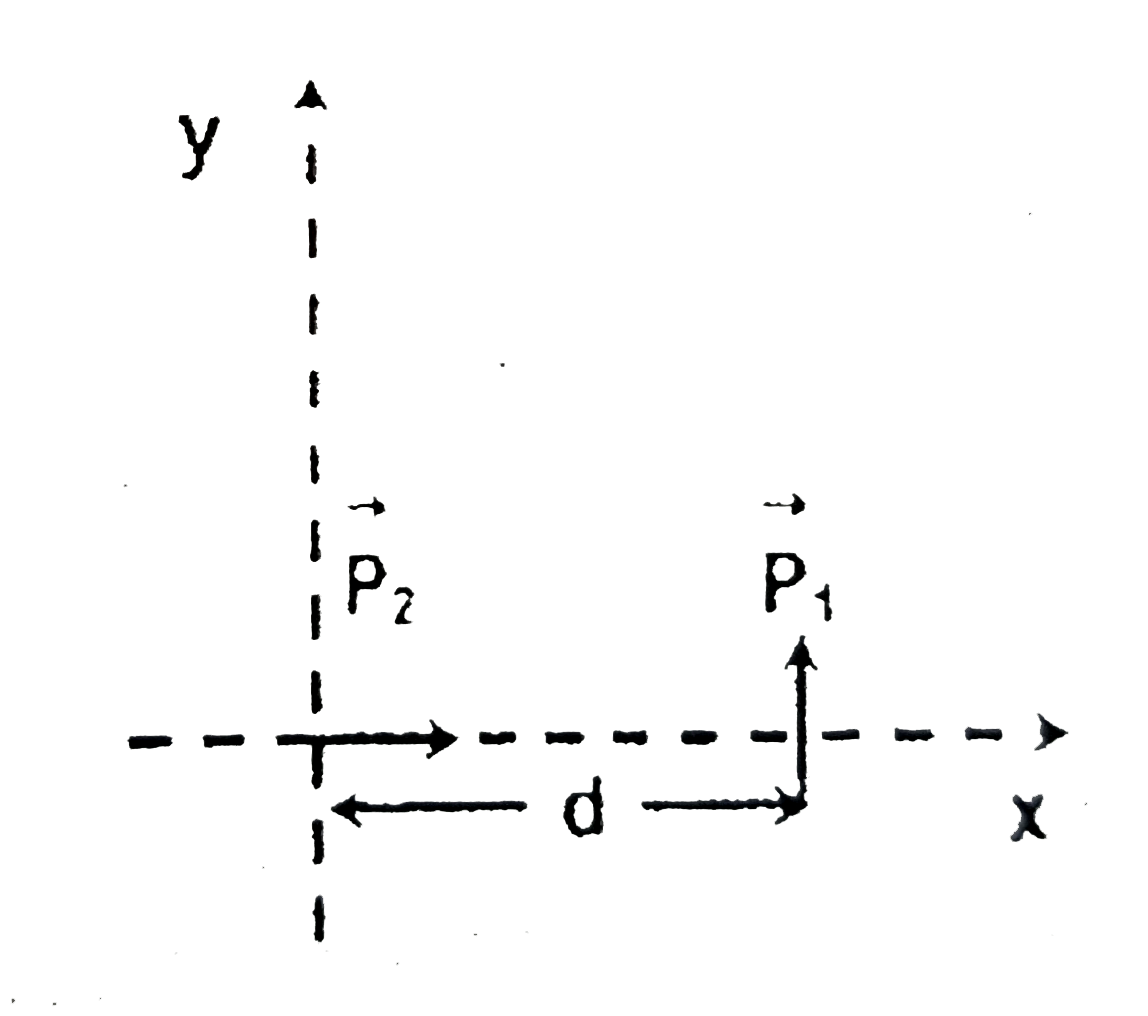Assertion:- If dipole (→P1) is moved along the line normal to the axis (dotted line shown) of another dipole (→p2), their interaction energy does not chagne.

Reason:- Electric field of →p2 at the position of →p1 is normal to →p1.
If both Assertion & Reason are True & the Reason is a correct explanation of the Assertion.
If both Assertion & Reason are True but Reason is not a correct explanation of the Assertion.
If Assertion is True but the Reason is False.
If both Assertion & Reason are False.
The correct Answer is:A
Position of →P1 remains at equitorial position of →P2 hence electric field of →P2 at position of →P1
always remains perpendicular →U=−→P.→E=0
Topper's Solved these Questions
- TEST PAPERSBook:ALLENChapter:TEST PAPERSExercise:PAPER 3
Explore 100 Videos
- TEST PAPERSBook:ALLENChapter:TEST PAPERSExercise:Part-1 Physics
Explore 15 Videos
- TEST PAPERSBook:ALLENChapter:TEST PAPERSExercise:MATHS
Explore 18 Videos
- TEST PAPER 4Book:ALLENChapter:TEST PAPER 4Exercise:PHYSICS
Explore 45 Videos
- UNIT & DIMENSIONS, BASIC MATHS AND VECTOR Book:ALLENChapter:UNIT & DIMENSIONS, BASIC MATHS AND VECTOR Exercise:Exercise (J-A)
Explore 7 Videos
Similar Questions
Derive an expression for the potential energy of an electric dipole of dipole moment →p in an electric field →E.
View SolutionA dipole of dipole moment →p is kept along an electric field E such that →Eand→p are in the same direction. Find the work done in rotating the dipole by an angle π .
View Solution
Knowledge Check
A dipole of dipole moment →p=pˆi lies along the x -axis in a non-uniform electric field →E=cxˆi . The force acting on the dipole is
AzeroB−pcx2ˆiCpcx2ˆiD−pc2x2ˆiA dipole of moment →p is placed in a uniform electric field →E. The force on the dipole is →F and the torque is →τ
A→F=0B→F=|→p|→EC|→τ|=→p.→ED→τ=→p×→EAssertion: The electric field due to dipole on its axis line at a distance r is E. Then electric field due to the same dipole on the equatorial line and at the same distance will be E2
Reason: Electric field due to dipole varies inversely as the square of distance.Aif both Assertion and Reason are true and the Reason is correct explanation of the Assertion.BIf both Assertion and Reason are true but Reason is not the correct explanation of the Assertion.Cif Assertion is true, but the Reason is false.Dif both Assertion and Reason are false
Obtain the expression for the torque →τ experienced by an electric dipole of dipole moment →p in a uniform electric field, →E. What will happen if the field were not uniform?
View SolutionAssertion: A charge particle is free to move along electric field. It does not move along an electric line of force?
Reason: Its initial position decides that it will move along the line of force or nor.
View SolutionA dipole of dipole moment p is placed at origin along x axis. Another dipole of dipole moment also p is kept at (0, 1, 0) along y axis. Find the resultant potential and electric field at (1, 0, 0).
View SolutionTwo dipoles →P1 and →P2 are oriented as shown in the figure. Assuming dipole of dipole moment →P2 to be placed at origin and dipole of moment →P1 is at a distance 'd' from origin then

View SolutionMention the between a current carrying conductor and magnetic field for which the force experienced by this current conductor placed field is largest ?
View Solution

